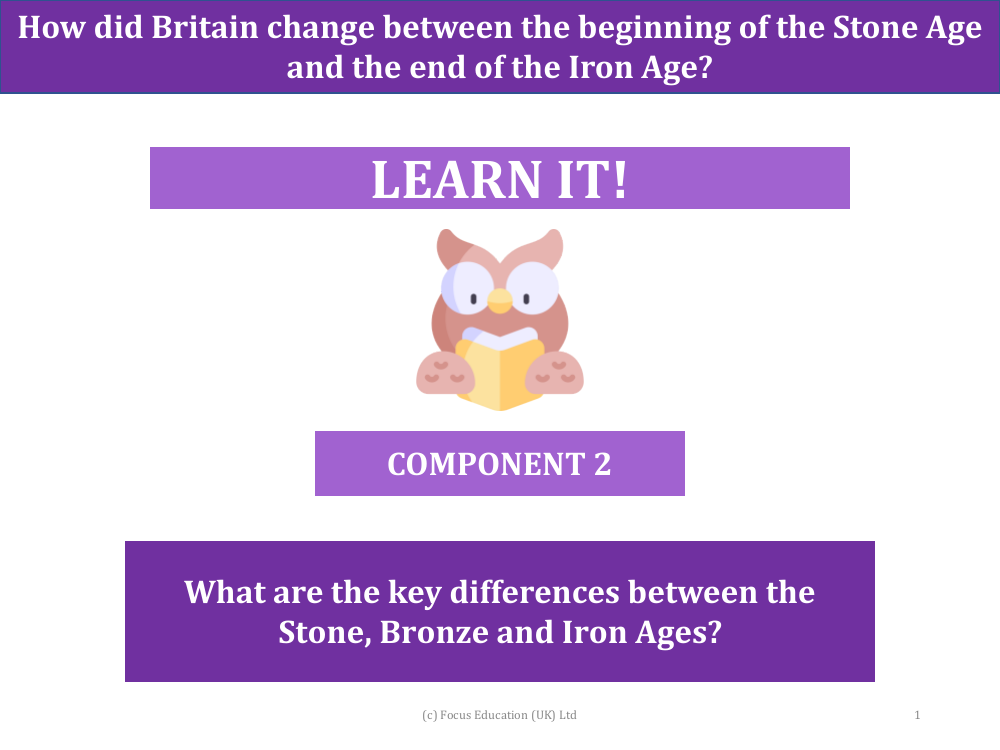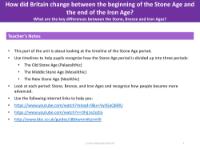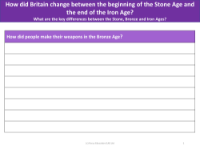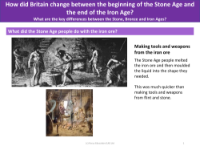What are the key differences between the stone, bronze and iron ages? - Presentation

History Resource Description
The Stone Age, Bronze Age, and Iron Age represent significant periods of human development, each characterized by the use of different materials for tools and weapons. The Stone Age is the earliest of these periods, and it is subdivided into the Palaeolithic (Old Stone Age), Mesolithic (Middle Stone Age), and Neolithic (New Stone Age). During the Stone Age, early humans crafted tools from stone, with the Old Stone Age marked by the first use of stone tools up to the last Ice Age, the Mesolithic by the end of the Ice Age to the start of farming, and the Neolithic by the onset of farming until the introduction of metal tools. The Bronze Age followed, where advancements in metallurgy led to the creation of tools and weapons from bronze, an alloy of copper and tin, which marked a significant technological leap from stone implements.
Moving into the Iron Age, the use of iron ore revolutionized tool and weapon making, providing stronger and more durable materials than bronze. The process involved melting iron ore and molding it into the desired shapes, which was a quicker method compared to crafting with flint and stone. This period also saw changes in societal structures, settlement patterns, and agricultural practices. In Britain, these ages collectively witnessed a transformation from nomadic hunter-gatherer groups to more settled farming communities, with each age bringing new levels of sophistication in technology, culture, and social organization. Activities such as imprinting into clay or Plasticine and freezing water can help students visualize how iron ore was cast into molds to create tools and weapons, providing a hands-on understanding of ancient manufacturing techniques.








